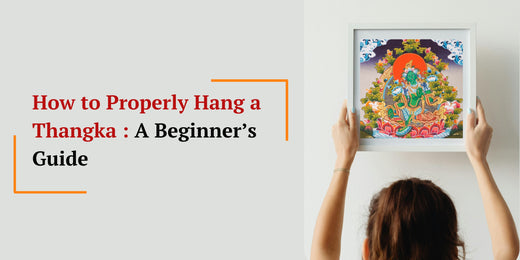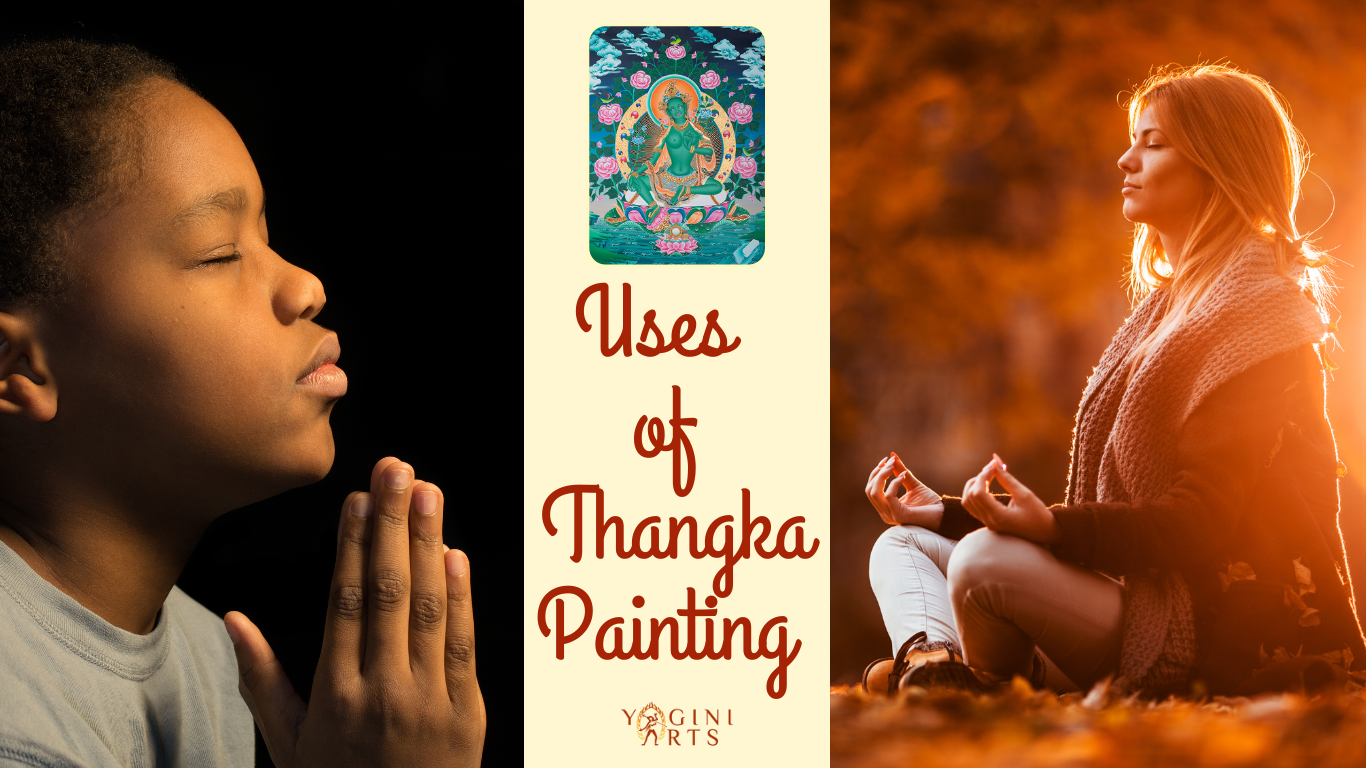
How to hang Thangka
Introduction
Thangka paintings are more than just artworks; they carry centuries of spiritual tradition and meaning in Tibetan Buddhism. Each brushstroke tells a story, depicting deities, mandalas, and sacred teachings. Hanging a Thangka isn’t just about decoration—it’s a way to honor its significance and connect with its wisdom. To ensure its beauty and integrity, careful consideration must be given to its placement, handling, and preservation. By displaying a Thangka thoughtfully, you not only showcase its artistry but also invite its teachings to inspire and guide.
Choosing the Right Location
Where you choose to hang your Thangka is crucial in honoring its spiritual significance. Consider these points when selecting the perfect spot:
- Sacred or Spiritual Space: Hang Thangkas near a home altar or meditation space. This is their traditional placement, as they are used for meditation and spiritual practices. If possible, hang the Thangka so it faces east, a direction often associated with enlightenment and new beginnings.
- Quiet and Respectful Environment: Avoid hanging Thangkas in noisy, high-traffic areas like kitchens or bathrooms. These areas are considered less suitable due to their lack of calm and sacred energy. You can hang it on a quiet room or study where you can reflect or meditates.
- Eye Level: Ideally, the Thangka should be hung at eye level or slightly above for optimal viewing and respect.

Preparing the Wall
Before you adorn your walls with the beauty of a Thangka, let's ensure the perfect canvas for this sacred artwork. Here are some guidelines on preparing the wall:
- Cleanliness: Thoroughly clean the wall surface to remove dust, cobwebs, and any other debris. This prevents the Thangka from coming into contact with contaminants.
- Wall Protection: Consider using a thin layer of acid-free foam board or a similar material behind the Thangka to protect it from moisture and wall imperfections.
Placing the Thangka in Brocade
Placing a Thangka requires delicacy and precision to avoid damaging the artwork. Carefully unroll the Thangka on a clean surface, taking care not to crease or fold the fabric. Attach a rod or dowel to the top and bottom edges using fabric loops or clips, ensuring that the tension is evenly distributed. This process not only secures the Thangka but also allows for easy hanging and removal without causing harm.

Hanging the Thangka
Hanging a Thangka painting is more than just decorating your home; it's an act of reverence and a way to bring spiritual energy into your space. Here are some guidelines to help you display these sacred artworks with care and respect:
- Hanging Hardware: Use appropriate hanging hardware such as picture wire or D-rings. Ensure that the hardware is strong enough to support the weight of the Thangka.
- Security: Consider using a locking mechanism or other security measures to prevent theft or accidental damage.

Final Touches
With your Thangka gracefully hung, take a moment to step back and appreciate its spiritual presence within your space. Examine its placement from various angles, ensuring it is perfectly aligned and harmoniously integrated into the surroundings. You can add soft lighting or simple decorations to make it stand out even more and create a serene atmosphere. These small details not only highlight the Thangka’s artwork but also help you honor its special spiritual value.
Conclusion
Hanging a Thangka is more than just placing art on a wall, it’s a meaningful act of respect for its cultural and spiritual significance. By thoughtfully choosing the right spot, preparing the wall, and hanging it with care, you honor the tradition and skill behind each piece. These steps not only highlight its beauty but also help share its deep teachings and inspire others to value its timeless wisdom.


